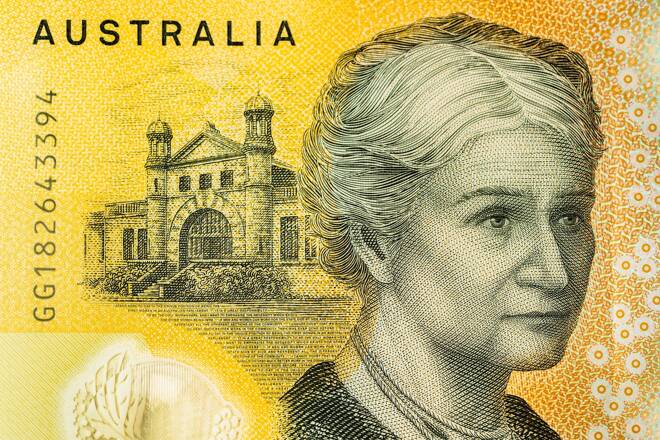Advertisement
Advertisement
AUD/USD and NZD/USD Fundamental Daily Forecast – Weaker on Shift in Sentiment Due to US Recession Fears
By:
Traders are responding to concerns over a US recession by selling the risky Aussie and Kiwi and moving money into the safe-haven US Dollar.
The Australian and New Zealand Dollars are putting in a mixed but lackluster performance on Wednesday. After a promising start to the week, the Aussie and Kiwi have succumbed to profit-taking and position-squaring amid warnings of an impending U.S. recession. The news is driving up demand for the safe-haven greenback along with general uncertainty over the Federal Reserve’s monetary policy and interest rates next week.
At 08:37 GMT, the AUD/USD is trading .6681, down 0.0007 or -0.10% and the NZD/USD is at .6327, up 0.0010 or +0.15%. On Tuesday, the Invesco CurrencyShares Australian Dollar Trust ETF (FXA) settled at $66.23, up $0.02 or +0.03%.
Traders are showing little response to domestic reports and news out of China, suggesting the strong possibility of a rangebound trade until the release of the U.S. producer price index (PPI) on Friday, but more likely the U.S. consumer price index (CPI) on Dec. 13. This will be the last major report from the U.S. ahead of the Dec. 14 Fed announcements.
Little Reaction to Slight Miss on Australia’s Q3 Gross Domestic Product Data
Australia’s economy slowed a little in the September quarter as high prices and rising interest rates sapped consumer spending power, a sign aggressive policy tightening is working to cool demand, Reuters reported.
Data from the Australian Bureau of Statistics on Wednesday showed real gross domestic product (GDP) rose 0.6% in the third quarter, compared with 0.9% the previous quarter and just under forecasts of 0.7%.
The report also showed annual growth still sped to a heady 5.9% – faster than China – though largely thanks to a one-off boom late last year as the economy re-opened from pandemic lockdowns.
China Trade Balance Shrinks Amid Virus Pressure, Interest Rate Hikes
Traders also showed little reaction to the news that China’s imports and exports shrank in November under pressure from weakening global demand and anti-virus controls at home.
The inability to rattle Aussie and Kiwi traders suggests the data may be little dated and subject to considerable change this month as China continues to ease current COVID-19 restrictions.
Short-Term Outlook
With no major reports until Friday and the Fed members on a blackout until next week’s interest rate announcement, the price action was expected to be subdued this week. However, warnings of a worsening in the U.S. economy next year from several major bankers could put downside pressure on the higher risk currencies.
The bank executives warned that inflation threatens consumer demand, putting the U.S. in a position to have an economic slowdown or recession in 2023. Traders are responding to these concerns by selling risky assets and moving money into the safe-haven U.S. Dollar. This move is putting pressure on its Australian and New Zealand counterparts.
For a look at all of today’s economic events, check out our economic calendar.
About the Author
James Hyerczykauthor
James Hyerczyk is a U.S. based seasoned technical analyst and educator with over 40 years of experience in market analysis and trading, specializing in chart patterns and price movement. He is the author of two books on technical analysis and has a background in both futures and stock markets.
Advertisement
